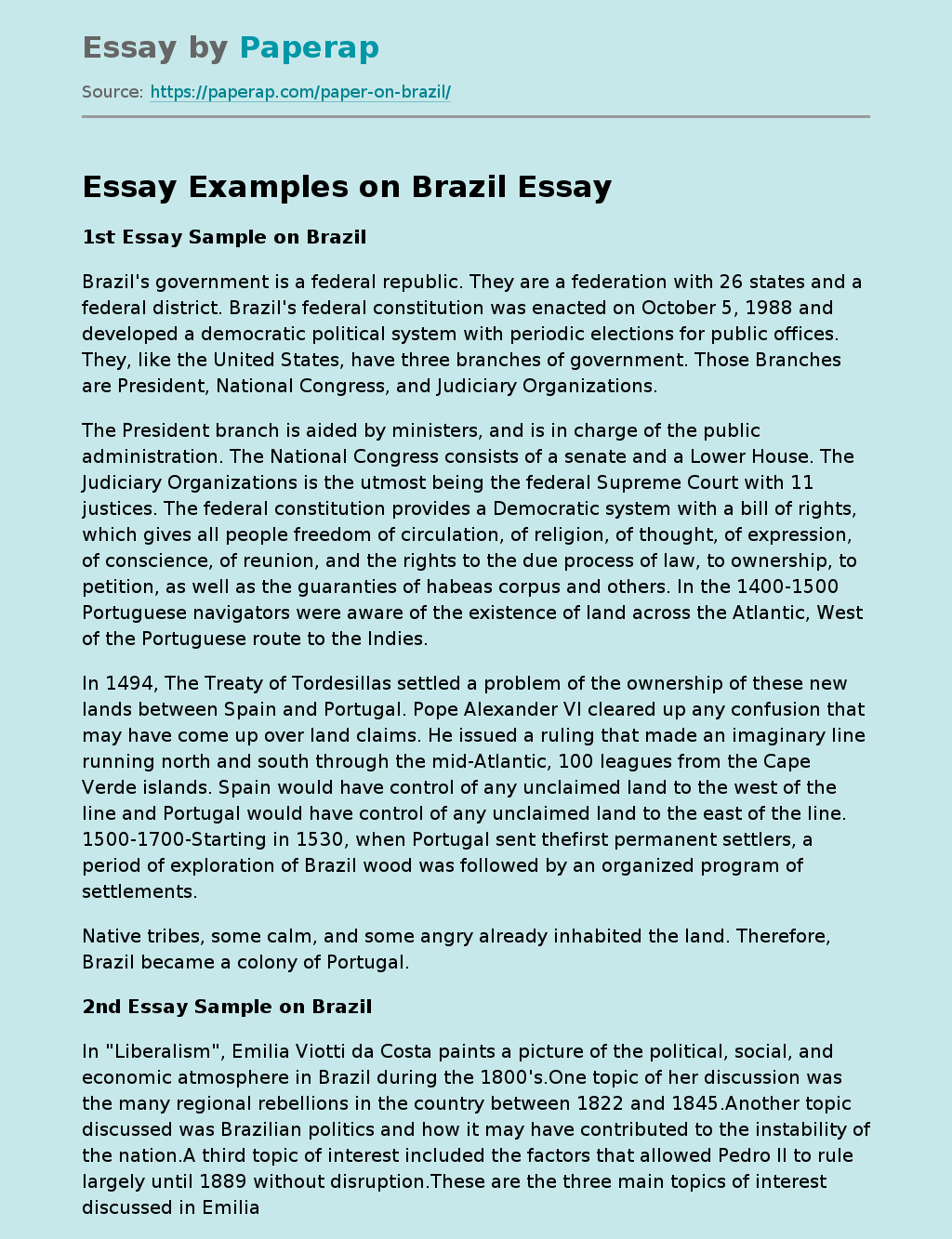The following example essay on “Political structure of Brazil” tells about the political structure in Brazil, which implies a strict separation of the legislative and executive powers.
Brazil’s government is a federal republic. They are a federation with 26 states and a federal district. Brazil’s federal constitution was enacted on October 5, 1988 and developed a democratic political system with periodic elections for public offices. They, like the United States, have three branches of government. Those Branches are President, National Congress, and Judiciary Organizations.
The President branch is aided by ministers, and is in charge of the public administration. The National Congress consists of a senate and a Lower House. The Judiciary Organizations is the utmost being the federal Supreme Court with 11 justices. The federal constitution provides a Democratic system with a bill of rights, which gives all people freedom of circulation, of religion, of thought, of expression, of conscience, of reunion, and the rights to the due process of law, to ownership, to petition, as well as the guaranties of habeas corpus and others.
In the 1400-1500 Portuguese navigators were aware of the existence of land across the Atlantic, West of the Portuguese route to the Indies.
In 1494, The Treaty of Tordesillas settled a problem of the ownership of these new lands between Spain and Portugal. Pope Alexander VI cleared up any confusion that may have come up over land claims. He issued a ruling that made an imaginary line running north and south through the mid-Atlantic, 100 leagues from the Cape Verde islands.
Spain would have control of any unclaimed land to the west of the line and Portugal would have control of any unclaimed land to the east of the line. 1500-1700-Starting in 1530, when Portugal sent thefirst permanent settlers, a period of exploration of Brazil wood was followed by an organized program of settlements. Native tribes, some calm, and some angry already inhabited the land. Therefore, Brazil became a colony of Portugal.
In “Liberalism”, Emilia Viotti da Costa paints a picture of the political, social, and economic atmosphere in Brazil during the 1800’s.One topic of her discussion was the many regional rebellions in the country between 1822 and 1845.Another topic discussed was Brazilian politics and how it may have contributed to the instability of the nation.A third topic of interest included the factors that allowed Pedro II to rule largely until 1889 without disruption.These are the three main topics of interest discussed in Emilia Viotti da Costa’s chapter “Liberalism”. There were many reasons for the multiple regional rebellions that took place in Brazil from 1822 until 1845.
Thefirst of these reasons was the forming of the National Convention, which was composed of many groups of social elites ranging from priests to plantation owners.These social elites had completely separate motivations and initiatives, which were mostly personal and wealth driven, than those of the lower class. The Constitutional Charter, passed in 1824, was a second reason for rebellion in the country.This “Constitution” was created by the Brazilian elite and supported their self-interests and property.Class and racial differences were a major issue of the time.
The constitution held no value for the majority of the population, who were mostly slaves and tenants on land they could not own.A third reason for rebellion by Liberals was religion, as Catholicism was the official religion of Brazil.As mentioned earlier, there were members of the National Convention who were priests.These individuals clearly wanted to preserve the interests of the church through the power of education.These are some of the underlying themes beneath the many regional rebellions of the period. Brazilian politics also helped to cause the instability of the nation.
Political Structure of Brazil. (2019, Oct 10). Retrieved from https://paperap.com/paper-on-brazil/

